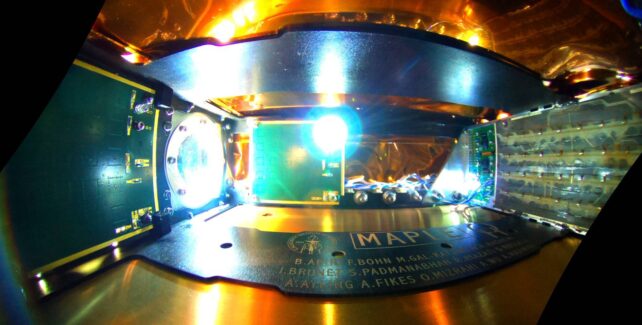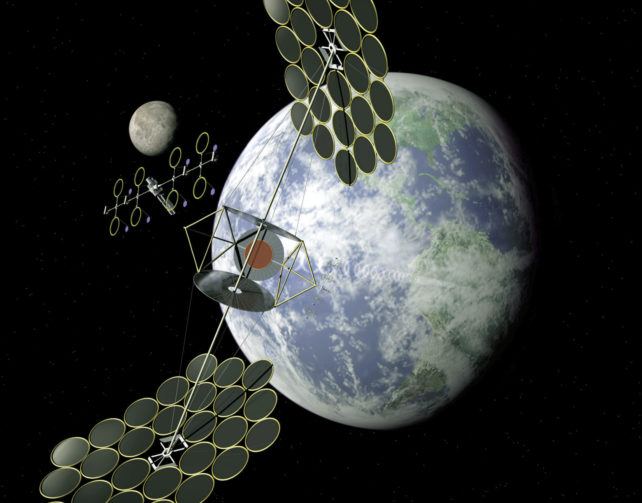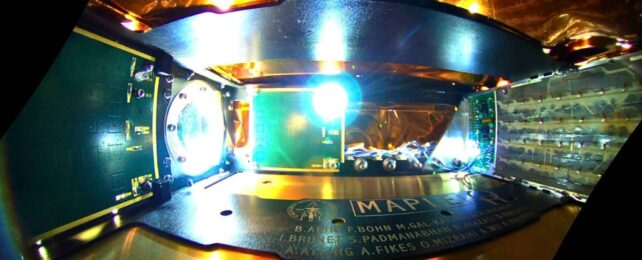Solar power is the fastest-growing form of renewable energy and currently accounts for 3.6 percent of global electricity production today. This makes it the third largest source of the renewable energy market, followed by hydroelectric power and wind.
These three methods are expected to grow exponentially in the coming decades, reaching 40 percent by 2035 and 45 percent by 2050. Altogether, renewables are expected to account for 90 percent of the energy market by mid-century, with solar accounting for roughly half.
However, several technical challenges and issues need to be overcome for this transition to occur.
The main limiting factor for solar power is intermittency, meaning it can only collect power when sufficient sunlight is available. To address this, scientists have spent decades researching space-based solar power (SBSP), where satellites in orbit would collect power 24 hours a day, 365 days a year, without interruption.
To develop the technology, researchers with the Space Solar Power Project (SSPP) at Caltech recently completed the first successful wireless power transfer using the Microwave Array for Power-transfer Low-orbit Experiment (MAPLE).
MAPLE was developed by a Caltech team led by Ali Hajimiri, the Bren Professor of Electrical Engineering and Medical Engineering and the co-director of the SSPP. MAPLE is one of three key technologies tested by the Space Solar Power Demonstrator (SSPD-1).
This platform consists of an array of flexible, lightweight microwave transmitters controlled by custom electronic chips. The demonstrator was built using low-cost silicon technologies designed to harvest solar energy and beam it to desired receiving stations worldwide.
The SSPP began in 2011 when Donald Bren, a lifetime member of the Caltech Board of Trustees, approached Caltech's then-president Jean-Lou Chameau to discuss the creation of an SBSP research project.
Bren and his wife (also a Caltech trustee) agreed to donate a total of $100 million to fund the project, while the Northrop Grumman Corporation provided an additional $12.5 million. The SSPD-1 launched on January 3rd atop a SpaceX Falcon 9 as part of a rideshare program and was deployed by a Vigoride spacecraft (provided by aerospace company Momentus).
For SBSP to be feasible, the satellites need to be lightweight so they can be launched in a cost-effective way and flexible so they can fit inside payload fairings (similar to the James Webb Space Telescope (JWST).
Harry Atwater, the Otis Booth Leadership Chair of the Division of Engineering and Applied Science, the Howard Hughes Professor of Applied Physics and Materials Science, and the Director of the Liquid Sunlight Alliance, is one of the project's principal investigators. As he explained in a Caltech press release:
"Demonstration of wireless power transfer in space using lightweight structures is an important step toward space solar power and broad access to it globally. Solar panels already are used in space to power the International Space Station, for example, but to launch and deploy large enough arrays to provide power to Earth, SSPP has to design and create solar power energy transfer systems that are ultra-lightweight, cheap, and flexible."
Each SSPP unit weighs around 50 kilograms (110 lbs), comparable with microsatellites that typically weigh between 10 and 100 kg (22 to 220 lbs). Each unit folds into packages about 1 m3 (35 ft3) in volume and then unfurls into a flat square measuring about 50 m (164 ft) in diameter, with solar cells on one side and wireless power transmitters on the other.
The SPPD-1 components are unsealed, meaning they are exposed to the extreme temperature variations of space. Beyond demonstrating that power transmitters can survive being launched into space, the experiment has provided useful feedback to SSPP engineers.
"Through the experiments we have run so far, we received confirmation that MAPLE can transmit power successfully to receivers in space," said Hajimiri.
"We have also been able to program the array to direct its energy toward Earth, which we detected here at Caltech. We had, of course, tested it on Earth, but now we know that it can survive the trip to space and operate there."
The demonstrator has no moving parts and relies on constructive and destructive interference between transmission antennas to shift the focus and direction of the beamed energy. These antennas are clustered in groups of 16, each driven by a custom-made flexible integrated circuit chip.
They also rely on precise timing-control elements and the coherent addition of electromagnetic waves to ensure the beamed energy reaches the intended target. Two receiver arrays are positioned about 30 cm (1 ft) from the transmission antennas that convert solar energy into direct current (DC).
This is used to power a pair of LED lights, demonstrating the full sequence of wireless energy transmission. MAPLE successfully demonstrated this by lighting up each LED individually and shifting back and forth between them.

MAPLE also includes a small window through which the array can beam energy, which was detected by a receiver at Caltech's Gordon and Betty Moore Laboratory of Engineering. This signal was received at the expected time and frequency and had the predicted frequency shift based on its orbit.
"To the best of our knowledge, no one has ever demonstrated wireless energy transfer in space even with expensive rigid structures," said Hajimiri. "We are doing it with flexible lightweight structures and with our own integrated circuits. This is a first."
The team is now assessing the performance of individual system elements by testing the interference patterns of smaller groups and measuring the difference between combinations. This process could take up to six months, giving the team ample time to detect irregularities and develop solutions to inform the next generation of solar satellites.
In addition to MAPLE, the SSPD-1 carries two other main experiments. These are the Deployable on-Orbit ultraLight Composite Experiment (DOLCE), a 1.8 x 1.8-meter (6 x 6-foot) structure designed to deploy small modular spacecraft, and ALBA, a series of 32 different types of photovoltaic cells to test which are most effective in space.

The ALBA tests are ongoing while DOLCE has not yet been deployed, and results from these experiments are expected in the coming months. Meanwhile, the results from the MAPLE experiment are very encouraging and demonstrate key SBSP technologies are feasible. Said Hajimiri:
"In the same way that the internet democratized access to information, we hope that wireless energy transfer democratizes access to energy. No energy transmission infrastructure will be needed on the ground to receive this power. That means we can send energy to remote regions and areas devastated by war or natural disaster."
SBSP has the potential to yield eight times more power than solar panels located on Earth's surface. When the project is fully realized, Caltech hopes to deploy a constellation of modular spacecraft that will collect solar power, transform it into electricity, and convert it to microwaves that can be transmitted wirelessly over anywhere in the world.
In addition to assisting the transition towards clean, renewable energy, it also has the potential to expand access for underserved communities. Said Caltech President Thomas F. Rosenbaum:
"The transition to renewable energy, critical for the world's future, is limited today by energy storage and transmission challenges. Beaming solar power from space is an elegant solution that has moved one step closer to realization due to the generosity and foresight of the Brens. Donald Bren has presented a formidable technical challenge that promises a remarkable payoff for humanity: a world powered by uninterruptible renewable energy."
This article was originally published by Universe Today. Read the original article.
